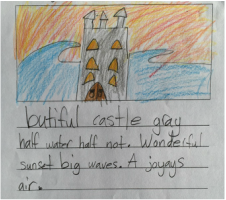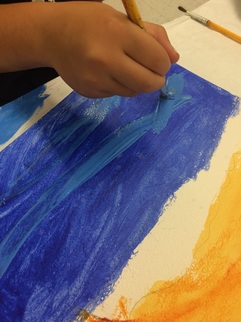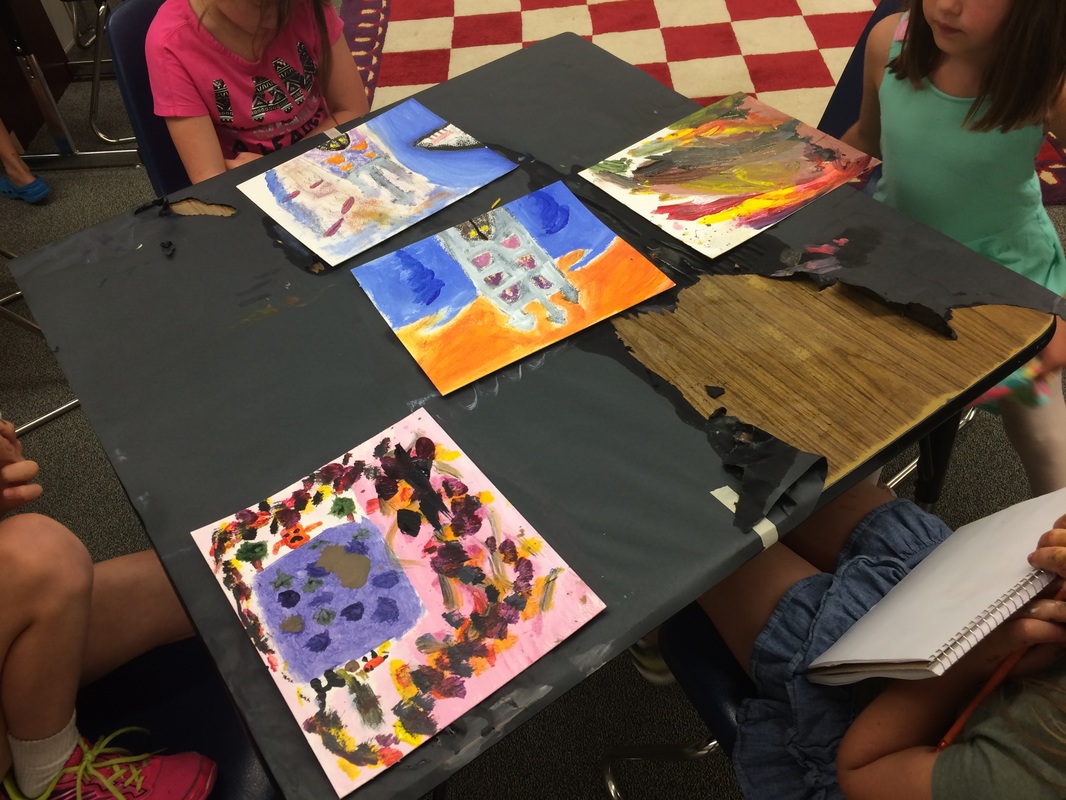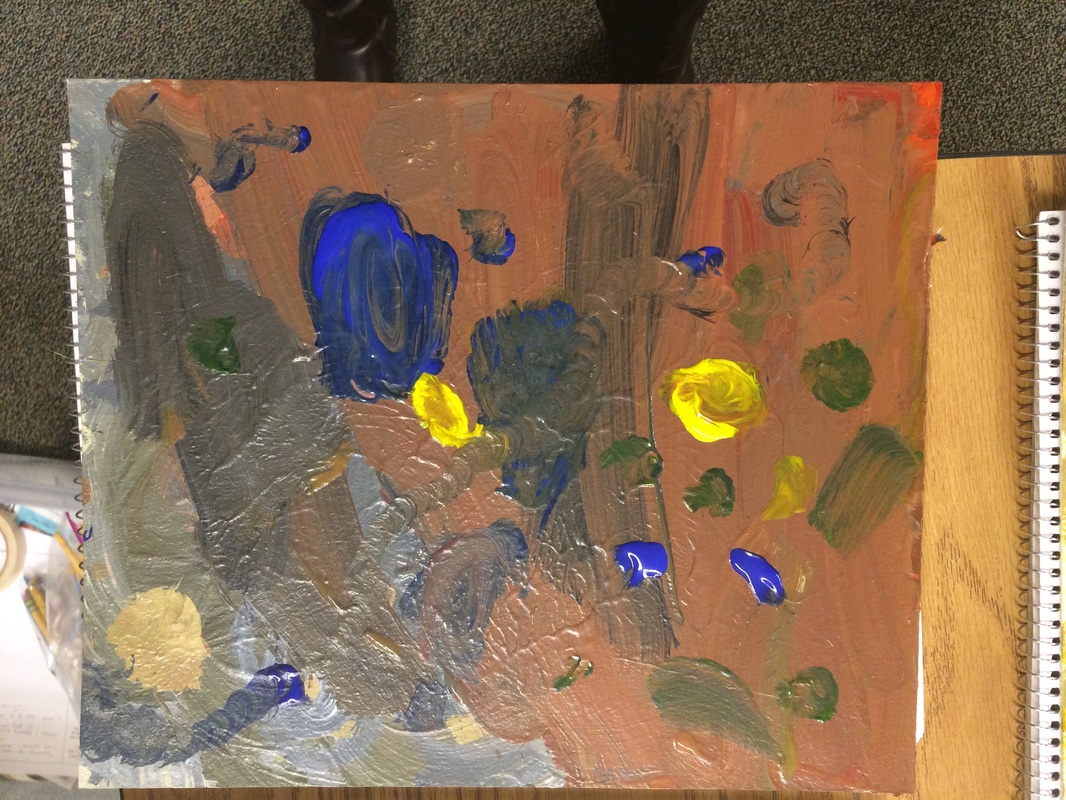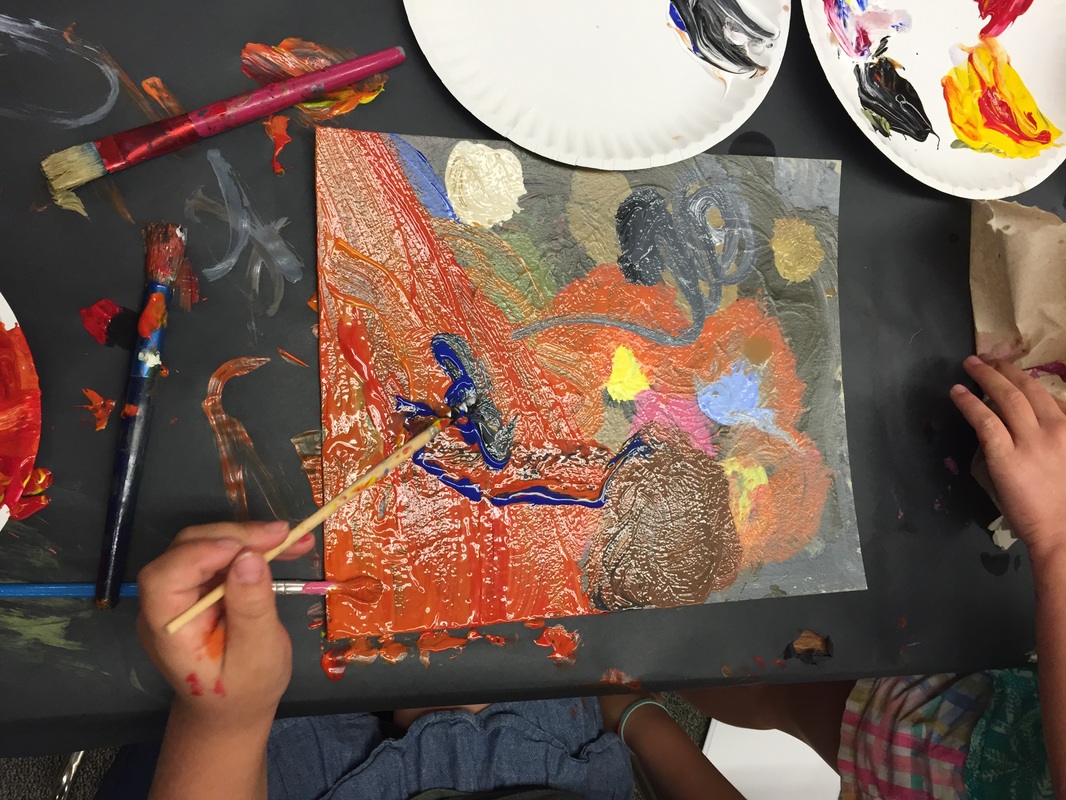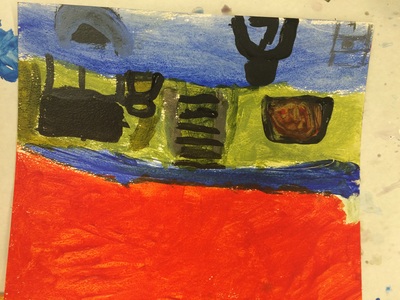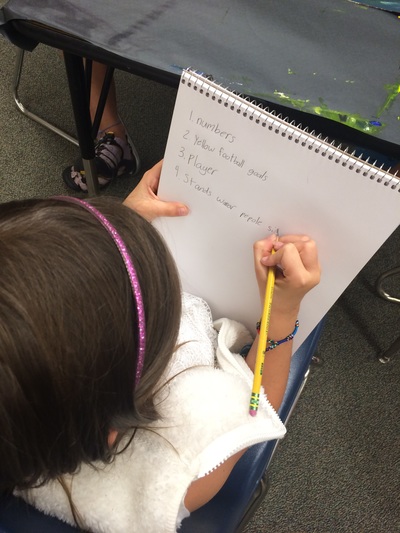Project ExplanationFor our second lesson students will be encouraged to think about their favorite place. We will introduce the idea that artists use inspiration from places that are personal to them. They will close their eyes and imagine the smells, sounds, and colors. To incorporate literacy and storytelling students will do a pair share and tell each other of their favorite place. Using listening skills their partner will then sketch the favorite place being described. They will be introduced to new vocabulary including seascape, landscape, and cityscape with examples from Hokusai, Bierstadt, Eddy. This will guide them into thinking about how to turn their favorite place into a painting. They will then explore mixing acrylic paints to create desired colors for their favorite place, by mixing the primary colors. Once the paintings are completed they will then make skits about chosen student paintings.
|
DocumentationDuring this class, students completed their acrylic paintings of a favorite place. Once finished, students explored how art can communicate ideas and narratives by working in groups to develop a story based on a painting of their choosing. The students then acted out their story for the rest of the class.
This student had a clear image of what she wanted to create from the beginning. When asked what her favorite place would look like she stated that "My favorite place is a castle half under water and half above the water. There is always a sunset in the sky and big waves come crashing down." The student's detailed ideation is what gave her an easy path to continue onto her painting. She incorporated the technique of a wash into her sky and successfully filled up the entire canvas, leaving no white space. Later, her painting was chosen by her classmates to be turned into a skit. A fellow crewmate wrote in their sketchbook observations about the painting. She wrote the words Ocean, castle, candle, and door. This brainstorming was the learning tool to turn a painting into a narrative that was later performed in front of the class.
PRAXIS: It's a volcano!This student came about the process completely differently. Unlike most students her ideas about a place changed drastically from her ideation to her finished project. At the end of last weeks class she was almost done with a clearly painted image of a dream candy land. We encouraged her to add more detail or incorporate a wash over the dried areas, instead her canvas turned into a living, changing place of exploration. As she mixed colors together and globed them onto her canvas, completely covering her old work, she made excited remarks to her friends. She stated, "Look at the orange and red mixing like hot lava!"and "Now it's like the inside of a tree!". Unable to follow her train of thought we were certain that she was in full exploration mode. Her ideas ebbed and flowed as the creation process was happening.
Art Speaks! What story does your art tell?The painting on the left was chosen by a group of boys for their skit and the middle picture shows this group brainstorming ideas for their skit. Before collectively coming up with ideas for the skit, students individually wrote down four things they observed about the chosen painting. The picture on the right shows one student recording her observations about the painting her group chose. While sharing their ideas out loud, the students collectively created their short skit to perform for the class.
Based on what they saw in the painting they chose, these students created a skit about a lost dog.
|
